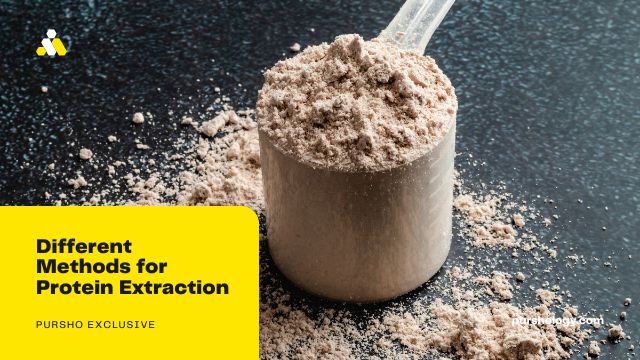Biological extraction of proteins can be performed in a number of ways. They include Size exclusion chromatography, Ammonium sulfate precipitation, and centrifugation. They can also involve electrophoretic mobility of small molecules.
In producing protein powder, to improve the production efficiency and extraction rate as much as possible, ZK food-grade protein centrifuges are more and more applied to the production process line, playing an increasingly important role in the production process. The ZK Protein centrifuge has a high-rigidity rotating rotor to ensure the bearings’ service life under high-speed rotation.
Purification of organelles
Using modern techniques, scientists are able to isolate organelles from cell samples. These procedures are used in cell biology to study the physiology of cells. Some scientists also use these procedures to study genomic alterations in cancer cells. However, these methods require labs to learn how to isolate organelles effectively. One example of this is the isolation of peroxisomes. These organelles are known to be involved in the biotransformation of xenobiotics. They were magnetically captured from L6 rat myoblast homogenates. They were then analysed by enzymatic assays.
Another example is the isolation of lysosomes. Lysosomes are membrane-bound organelles that participate in a variety of cellular processes. They are also known to express V-ATPase on their surface. They can also be separated using a magnetic field. They are then purified using Lyso-2Strep, a specific affinity purification method.
Size exclusion chromatography
Various applications have been demonstrated with size exclusion chromatography (SEC). It is used for the extraction of proteins from biological samples and the study of interactions among proteins. It is often combined with other techniques to ensure that the results are reproducible. A variety of factors affect the performance of size exclusion chromatography. These include the particle size, the resolution, and the flow rate. Generally, resolution is determined by the efficiency of the resin to produce narrow peaks. Flow rate is also important because it influences the sample volume.
The efficiency of a resin is dependent on the particle size and the packing of the column. The selectivity of a resin is dependent on the column format, the fractionation range, and the resin’s properties. The main advantage of size exclusion chromatography is that it is compatible with physiological conditions. Size exclusion chromatography is widely used to purify proteins. It is also used to study protein aggregation. It can be used to analyze the kinetics of protein aggregation and to estimate the molecular weight of an unknown analyte.
Centrifugation
Choosing the right centrifugation apparatus can have a significant impact on the success of your protein of choice. Depending on the type of culture you are dealing with, the quality of the resulting extract can make or break the results of a quality qPCR assay. Having a standardized quality control procedure in place can go a long way toward improving the overall success of your experiments. Having a quality QC protocol in place can help avoid the need to resort to a cursory examination of your PCR amplification tubes after the fact. A high quality QC procedure can also help avoid the mishaps of a faulty QC process.
A comprehensive list of all of your lab’s pertinent blood culture components can help ensure a successful qPCR. The requisite blood culture components should be stocked in a clean glass sterile jar or tin at all times. The jar should be topped off with an antimicrobial sanitizer. It is a good idea to label each jar with a unique identifier. The jar should be stored at -20 degC to avoid the risk of contamination.
Ammonium sulfate precipitation
Among the many methods used to purify proteins, ammonium sulfate precipitation is considered the gold standard. This technique is a very inexpensive and efficient way to separate proteins from aquaous solutions. It also preserves biological activity of enzymes. A small sample is required to achieve efficient precipitation. This means that the first addition of ammonium sulfate should be done at a saturated concentration. Once the solution is saturated, the concentration can be increased stepwise. This helps to avoid the formation of localized areas of higher concentration.
Ammonium sulfate precipitation alters the solubility of proteins by reducing their ionic strength. Proteins are highly soluble in water but globular proteins have exposed ionic groups. As a result, they form hydrogen bonds with water molecules. When proteins are precipitated from the solution, the hydrogen bonds are broken, allowing the proteins to return to their native conformation. This is the first step in protein purification.
Electrophoretic mobility of small molecules
Molecular separation by electrophoresis is a commonly used laboratory technique. When the sample is placed in the electrophoresis chamber, two oppositely charged electrodes pull the molecule towards them. This pull moves the molecule through the gel matrix. The amount of movement depends on the size and ionic strength of the molecule, as well as the strength of the electrophoretic field.
Small molecules tend to move faster than large molecules. This is a result of the larger molecule requiring more work to pass through the gel pore. Larger molecules also face larger frictional forces. When electrophoresis is performed, the sample is subjected to a pre-formed pH gradient. This gradient is produced by mixing synthetic polyelectrolytes in a solution. The buffer pH is important in achieving high quality separation. This pH gradient has a stabilizing effect.







